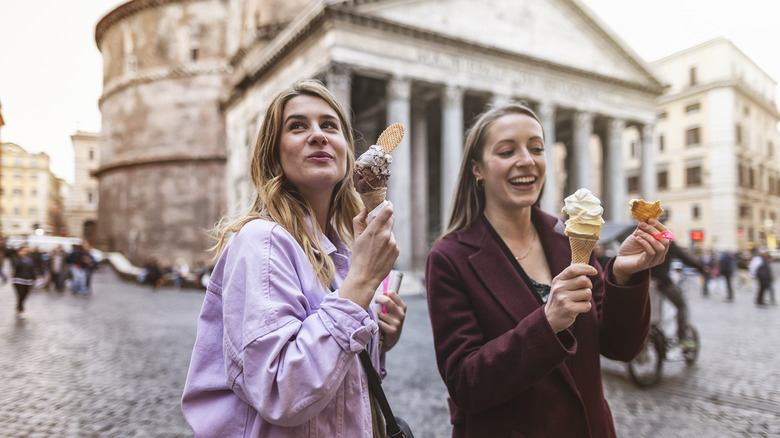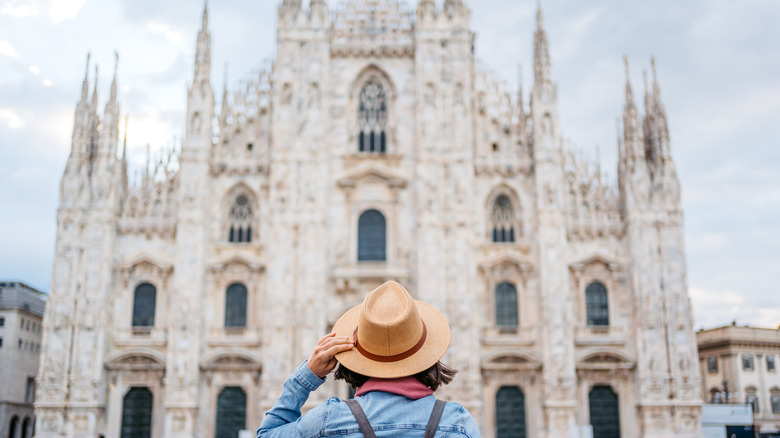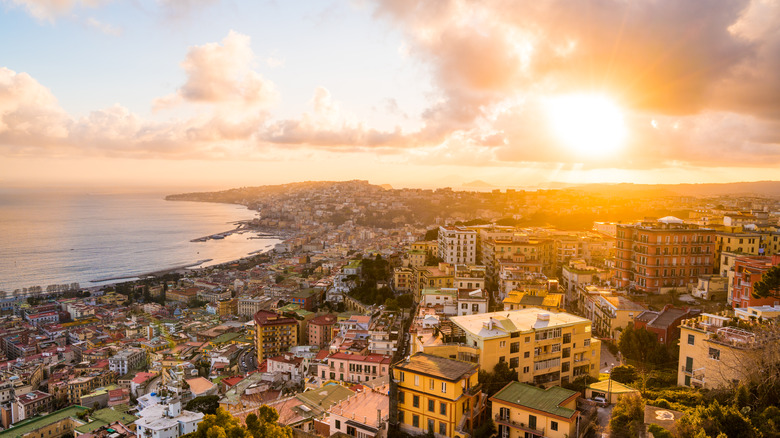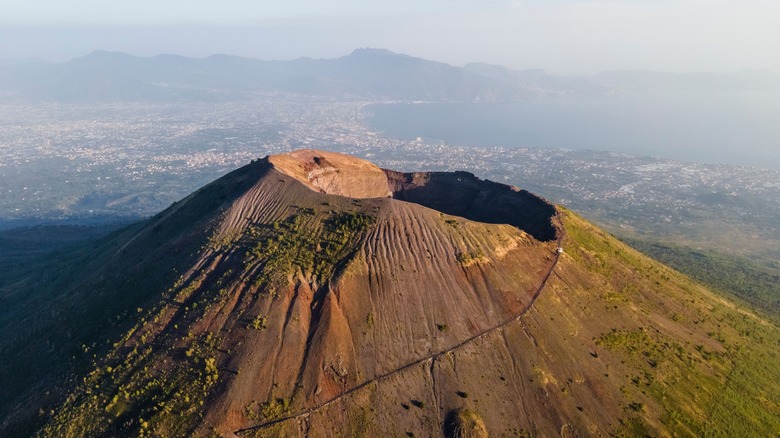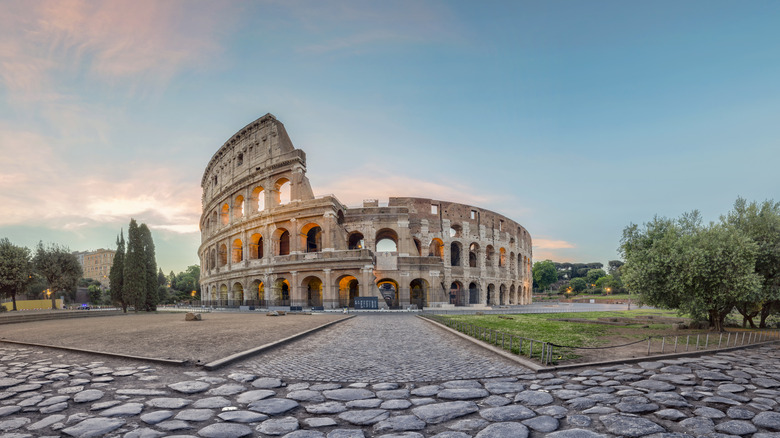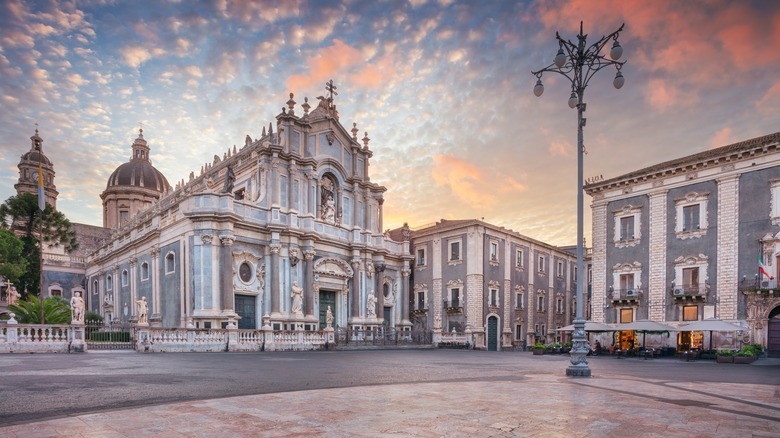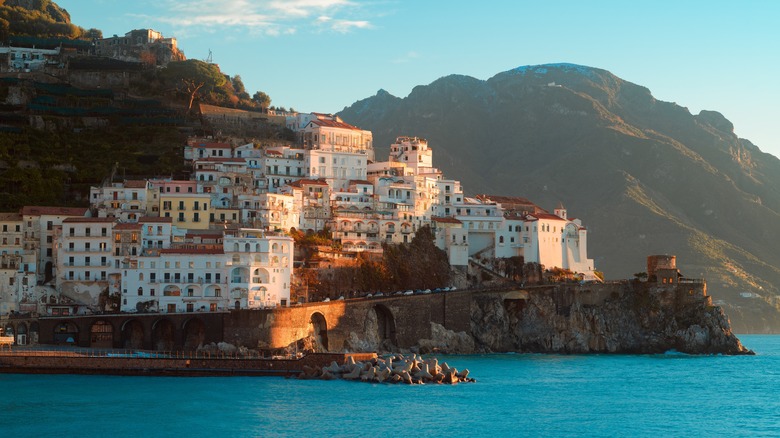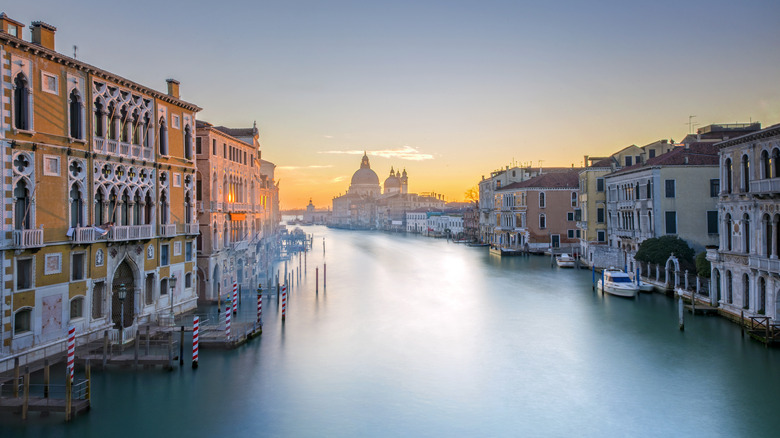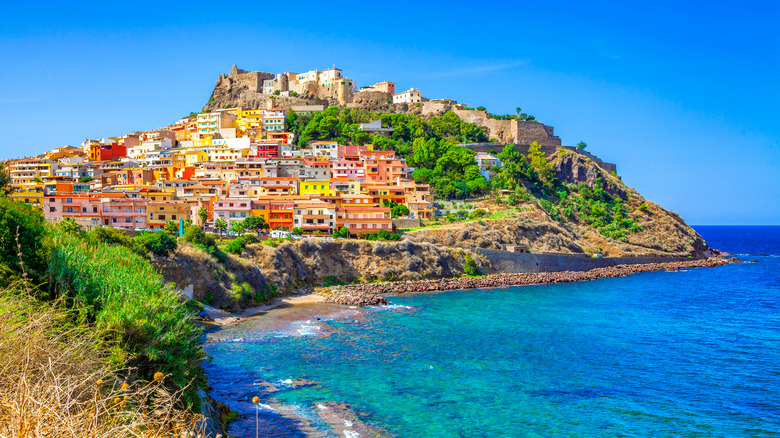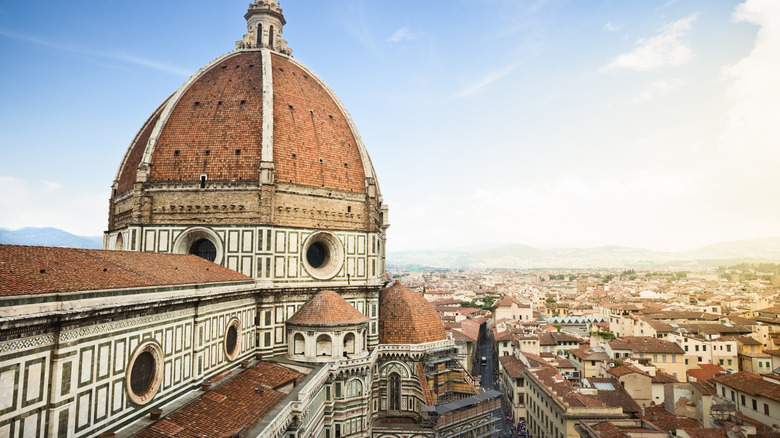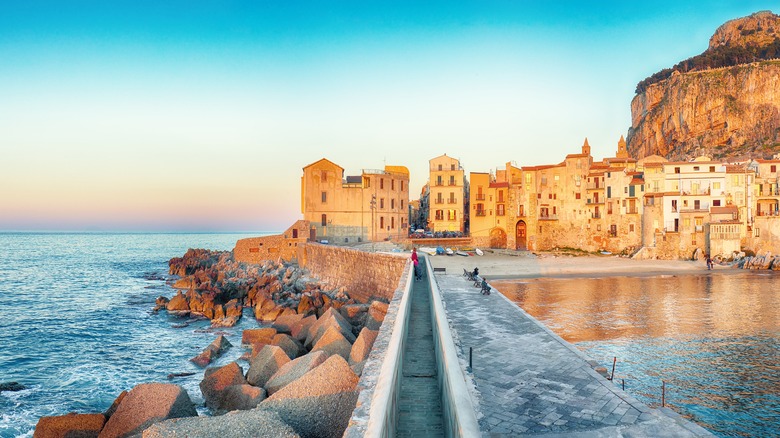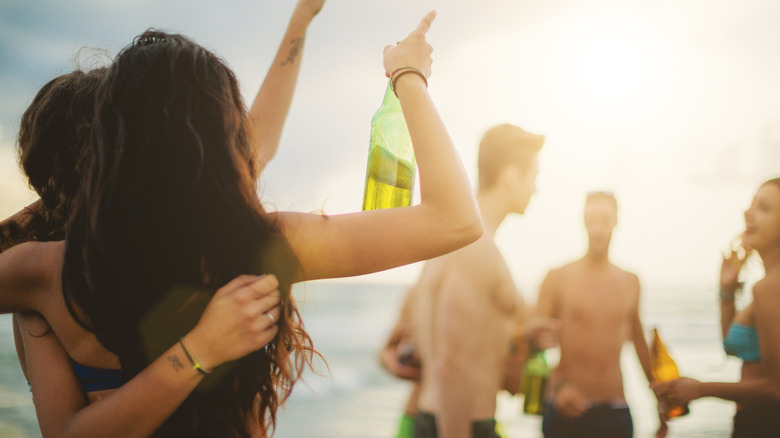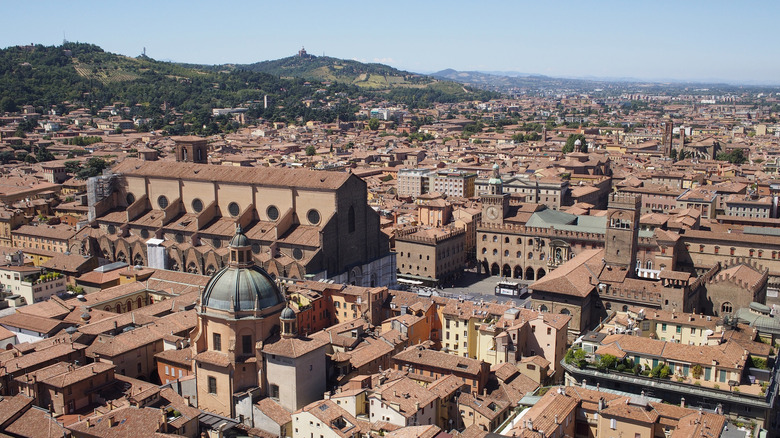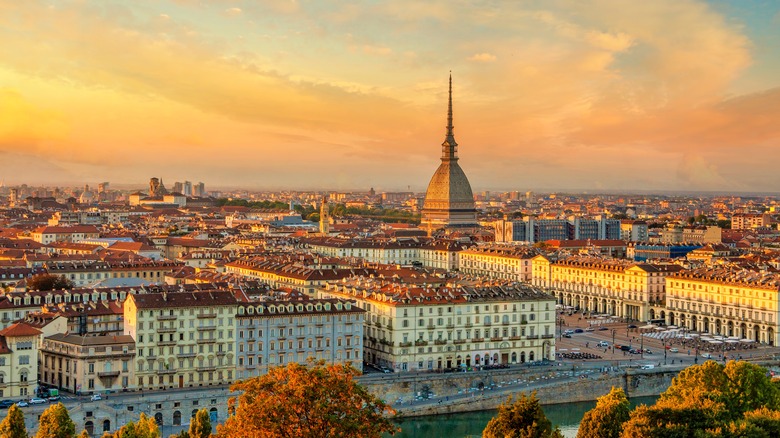Dangerous Vacation Spots In Italy
First and foremost, please do not allow this article to scare you away from visiting Italy, as it is one of Europe's most popular tourist destinations for countless reasons. Its influential contributions to the art world cannot be overstated, as it was the home to legendary figures such as Leonardo da Vinci, Michelangelo, and Giovanni Bellini. Italy's architectural wonders and expansive landscapes have given us more World Heritage Sites than any other country. And, of course, we cannot disregard its cuisine, as this nation invented the pizza and perfected the many pasta dishes that the entire globe enjoys today.
More on topic, one should note that Italy is a remarkably safe place to explore, rated as the 34th most peaceful country according to the 2023 Global Peace Index. However, with 62 million visitors a year, there will always be hotspots for criminals to prey on absentminded sightseers. Furthermore, the beauty of its scenic surroundings comes with the risk of some natural disasters. Your safest bet is to learn what not to do in Italy while studying this list to minimize any concerns you may have about your trip.
Milan
Milan may not be Italy's capital, but it flaunts the "capital" title in alternate ways. Firstly, Milan serves as a financial capital, as it is the wealthiest city in Italy, boasting one of the highest domestic product rates in the EU. Many also regard it as one of the top four leading fashion capitals in the world, along with Paris, London, and New York. Finally, in a less desirable category, Milan is known as Itay's crime capital, with more incidents of unlawful offenses than any other region in the country.
Such statistics shouldn't be too surprising. Milan's high economic turnover and vast tourist activity mean more criminal opportunities, which goes for any comparably busy city. The problem comes with the number of incidents increasing every year, with particular concerns around theft and drug use. Another worry is the threat of terrorism. Due to potential risks, Italy is often rated as "Level 2: Exercise Increased Caution" by the US State Department, and Milan itself is a primary target. In 1973, an attacker threw a hand grenade into a police headquarters, killing four people and injuring 45 others. More recently, in 2009, a bomb exploded at Bocconi University, but luckily, nobody was hurt.
Naples
Naples is a must-visit destination for history enthusiasts. Founded by the Greeks around the second millennium BC, it is one of the world's oldest continually inhabited cities, featuring the largest historic city center in Europe. However, if you're more of a foodie traveler, Naples has what you need, too. As the official birthplace of pizza, these establishments take their global culinary influence seriously, with more Michelin-star restaurants than any other Italian province.
Sadly, there is another less encouraging statistic, which concerns Italy's longest-running criminal group, the Camorra, which has operated here since the 17th century. They are considered one of the most influential organizations in the area, and their presence has exasperated issues such as drug trafficking and counterfeiting. Thankfully, these antisocial problems usually don't interfere with tourism, and you probably won't even notice the shady events taking place behind the curtain. However, there are specific neighborhoods in Naples that you're better off avoiding; for example, the narcotic-ridden region of Scampia and the mafia-controlled Forcella.
Mount Vesuvius
Not far from Naples, you'll find Mount Vesuvius. This 4,203-foot high volcano has made a permanent mark on history for its 79 AD eruption, which wiped out many Roman cities, including Herculaneum, Oplontis, Stabiae, and, most notably, Pompeii. The ancient city that was once Pompeii now sees 2.5 million yearly visitors due to the plaster casts of its victims, forever frozen in their final positions moments before the volcanic material sealed their fate. Such a morbidly unique sight is one of the most terrifying places on earth, leading UNESCO to recognize it as a World Heritage Site.
But what most people don't know is that this volcano remains very much active. Thankfully, there has not been an event as fatal as the 79 AD tragedy, but Mount Vesuvius has flared up over 30 times since then. The most recent eruption took place in 1944, killing 26 people while 12,000 were forced to relocate. When this monster mountain will strike next is anybody's guess, but with 3 million residents living within its fire zone, it is famously one the most dangerous volcanoes in the world.
Rome
If you haven't visited Italy's capital yet, then consider canceling all of your plans and making that trip immediately. Rome is an explorer's fantasy with some of the most engaging history lessons on the planet. At the height of The Roman Empire, their territorial rule expanded across Europe, North Africa, and the Middle East, influencing everything from language, art, religion, philosophy, and law to this day. Moreover, Rome continues to capture the imaginations of the internet era, with the question "How often do men think about ancient Rome?" going viral in 2023.
What the modern city of Rome offers above everything else are its landmarks. The Roman Forum, the Pantheon, and the Trevi Fountain will transport you back in time. There's also the independent Vatican City, where you can stroll through the world's largest church, St. Peter's Basilica, as well as the Sistine Chapel. And, of course, Rome offers one of the New Seven Wonders of the World, the Colosseum. But it is around these tourist attractions that you need to be careful, as pickpockets and scammers will have their eyes watching you from every angle. Things to look out for are "friendly" people who try to offer you something for free or ATMs that appear unusual in any way.
Catania
In 1693, a 7.4 magnitude earthquake hit Sicily, the strongest Italy has ever felt on record. With around 60,000 casualties, nearly two-thirds of Catania's population was lost. But the remaining people rebuilt their town with such enthusiasm and artistic attention that the new architecture was an impressive improvement on the original. This achievement has been recognized by UNESCO and is rated as one of the most beautiful Italian cities to visit during the fall. Meanwhile, the residents have continued to flourish, increasing in numbers until today, as Catania is now the second-most populated city on the island.
The fear of another devastating earthquake has never left the area, with visitors told to remain alert. However, there are two other concerns that bring a much higher risk: corruption and eruptions. The Cosa Nostra (otherwise known as the Sicilian Mafia) operates across Sicily, with regular reports of locals struggling against the criminal group. As a result, some have called it the most dangerous city in Europe. At the same time, the active volcano Mount Etna looms above, ready to erupt at any moment, as it recently did in November 2023.
Amalfi Coast
Running along the coastline of southern Italy, the Amalfi Coast is a sight to behold. Named after the central town of Amalfi, the stretch is overwhelmed by diverse natural beauty, and is yet another Italian location wearing a UNESCO stamp of approval. Because of these picturesque qualities and its day-trip distance from Rome, the Amalfi Coast has been a desirable tourist destination since Roman rule, with interest only continuing to escalate. Of course, this growth of sightseers comes with its own problems, especially regarding traffic.
However, it is not the tourism but the environment that should worry you. As climate change threatens our planet, we can easily note the effects in places like the Amalfi Coast. Unprecedented rainfall in the area has wreaked havoc on the landscape as it is not equipped to deal with these sudden shifts in the weather. The most devastating incident came in 2010 when a mudslide ended in the tragic death of 26-year-old Francesca Mansi. But even this loss has changed little of the infrastructure, with experts agreeing that more needs to be done to prevent such catastrophes in the future. With that in mind, you should select your seasons carefully, aiming for anywhere between March and September to avoid the downpours.
Venice
Venice is arguably the most recognizable city in the world thanks to its lack of cars and roads. Instead, it uses canals and boats as its exclusive means of transport. Such fairytale terrain could never be left alone by travelers, and Venice faces up to 60,000 visitors every day. This level of tourism is unsustainable, with locals leaving due to the swarm of people disrupting their home, resulting in more tourists than residents. For this reason, the Italian city plans to implement a cover charge of €5 soon.
Another consequence of so much foreign currency swimming through Venice is that its theft rate is above the national average, with particular concerns around pickpocketing and scams. One should be careful with their belongings across this city but be additionally wary in hotspots such as St. Mark's Square and Santa Lucia train station. That said, Venice remains relatively safe, and you are more likely to be mugged by an aggressive seagull than a human. These birds of crime swoop down to snatch whatever food items they can, often directly from your hands or even your plate. Accordingly, the council has been arming tourists with water pistols to balance the playing field.
Sardinia
Sardinia's ecosystem is so unique that it has been referred to as a micro-continent. Its forests, mountains, beaches, and streams remain largely untouched while its indigenous people speak their own language. Their tongue is known as Sardinian, which is officially recognized in Italy but is sadly declining in speakers. Regardless, due to its isolated location yet expansive size (the second-largest island of the Mediterranean Sea), tourism is booming, with up to 2.9 million visitors a year witnessing these scenic gifts.
Unfortunately, this remarkable environment can often be considered the area's downfall. The extreme temperatures brought on by climate change do not integrate well with the forest life that covers around half of the land. This combo has led to the worst wildfires in the country, with over 50 ripping across the island in 2023 alone. Hence, one should avoid the months of June, July, and August, not only because they are unbearably hot, but also because they are the most crowded. Instead, March to May and September through October are warm and unburdened by the tourist rampage.
Florence
There is no spot in Italy (or, indeed, the world) as artistically significant as Florence. As the birthplace of the Renaissance movement, there are enough architectural masterpieces and iconic pieces of artwork to keep you busy for days. Perhaps the most famous statue on the planet, Michelangelo's "David," stands tall in Galleria dell'Accademia. Works by Rembrandt, da Vinci, and Raphael adorn the walls of the Uffizi Gallery, where you'll also find Sandro Botticelli's masterpiece, "The Birth of Venus." Not to mention the historic center Piazza del Duomo, which is something out of a fantasy book, featuring the Florence Cathedral with the largest brick dome ever assembled.
Moreover, Florence is considered a safe place to visit, with millions of tourists walking the streets every year without incident. However, it is this same sense of security that lulls people into letting their guard down, which makes for the easy pickings of their pockets. Theft is higher than the national average, with numerous reports of passing scooters snatching bags from unsuspecting victims. As with any highly concentrated tourist area, keep your valuables out of reach and maintain a watchful eye at all times.
Palermo
If you're a fan of "The Godfather" film series, then Sicily is the stop for you. So many scenes from those movies were shot around the region, while the dialogue that sounds like Italian is actually the native Sicilian, which is distinct enough to be categorized as a separate language. However, be warned that fiction is not far from reality, as Sicily's capital, Palermo, is where the mafia-like Cosa Nostra thrives. In fact, they are known as the most powerful group in the city, influencing every part of the economy that you can think of, including gambling and food businesses.
As a result, if you encounter any trouble, it's best to avoid getting involved and rather make an exit strategy as quickly as possible. For additional encouragement, simply recall the story of Pino Puglisi. He was a Palermitani Roman Catholic priest who was vocal about his disapproval of the Cosa Nostra. The fact that he was a holy man meant nothing to the organization, and he was swiftly assassinated in 1993, on his 56th birthday.
Rimini
Rimini is a holiday paradise. Its coastal position makes for the ideal seaside resort city, where tourists from across the world come to relax next to the ocean. But when night falls, the clubs blast open their doors, making for legendary tales about the Rimini party vibe. For example, the Tiburon bar is renowned for its cocktails, while the Carnaby Club is massive with three dance floors. Otherwise, you can simply wander around the city center, where eateries and small bars line the streets.
Of course, with this rowdy lifestyle comes the problems one may expect, including intoxicated mischief and high levels of drug use. The narcotic scene grew so out of hand that resident Vincenzo Muccioli decided to do something about it and founded the San Patrignano Community. The idea was to provide a rehabilitation program for those suffering from addiction, completely free of charge. Such an admirable idea did not hold onto its glowing reputation for long, and it is now considered a cult by many thanks to the Netflix docuseries "SanPa: Sins of the Savior."
Bologna
Perhaps Bologna's most significant boasting point is its University of Bologna. Founded in 1088, it is the oldest university in the world that has never stopped operating. To give you an idea of how old that is, the word "university" comes from the Latin "universitas," meaning "the whole." This noun was coined by the University of Bologna. Furthermore, this establishment produced the first woman to have taught at a university (Bettisia Gozzadini) and the first woman to earn a doctorate in science (Laura Bassi). However, if education doesn't impress you, then Bologna's delicious cuisine will, as it's the home of Bolognese sauce.
Bologna is essentially another safe city, but there is a worrying amount of sexual assault cases, with some of the highest reported numbers in the nation. Incidents of armed robberies are also said to be more prevalent here than other cities in the country. According to Numbeo, the town has the sixth-highest crime rate in Italy. For peace of mind, avoid walking around at night and take taxis instead.
Turin
Turin's list of notable sights is seemingly endless and makes for an essential stop on any Italian adventure. Its tasteful architecture seamlessly covers various styles, such as Baroque, Neo-Classical, and Art Nouveau. Its globally celebrated museums include the world's second-largest Egyptian collection of artifacts (behind only Cairo) and the Museum of Oriental Art. For religious followers, the Shroud of Turin can be found here, which is a cloth featuring the faint face of Jesus Christ pressed upon it. And finally, this city is known as the birthplace of Italian cinema. It's no surprise, then, that Turin is a desirable location for many important events, hosting the likes of the 2006 Winter Olympics and 2022 Eurovision contest.
Sadly, Turin frequently shows up on lists of Italy's most dangerous cities, and even as one of the worst in Europe. The main crimes to look out for include pickpocketing, drug use, and theft. However, Turin has also been called an underrated Italian city for couples, so if you have a knack for avoiding trouble, this may be the ideal Italian adventure for you and your sweetheart.
